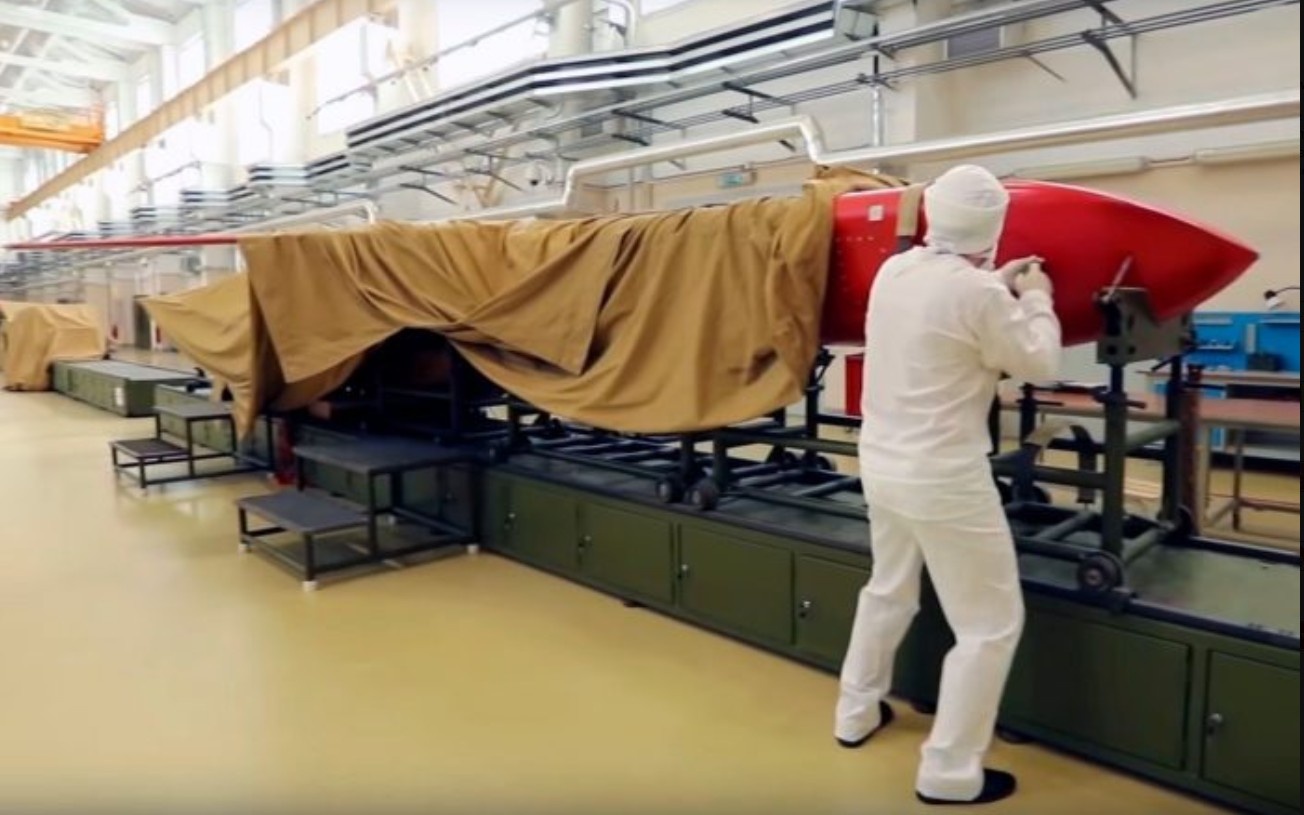As Russian President Vladimir Putin heads to Alaska for a rare face-to-face meeting with his US counterpart, President Donald Trump, for Ukraine peace talks, Moscow is busy preparing another surprise for the world.
According to multiple media reports, Russia is preparing for new tests of its much-discussed and feared 9M730 Burevestnik nuclear-powered cruise missile, a “one-of-a-kind” weapon in Moscow’s arsenal.
If these tests are successful, Russia will become the first country in history to have an operational cruise missile capable of carrying a nuclear warhead that moves on a nuclear propulsion system, giving it an unlimited range that can hit any other point on the planet from any point.
“Russia appears to be on the verge of conducting a new test of its controversial nuclear-powered cruise missile, the 9M730 Burevestnik (NATO code: SSC-X-9 Skyfall), from the Pankovo range in the Arctic archipelago of Novaya Zemlya,” Defense Romania reported.
While Moscow has not made any official announcement, multiple clues point in this direction. Firstly, a NOTAM (Notice to Airmen) warning has been issued from August 7 to August 12, covering 40,000 square kilometers over Novaya Zemlya.
U.S. Fights Su-57 Fighter Threat With F-16’s New Paint Scheme; Is USAF Acknowledging The Might Of Felons?
Secondly, at least four russian vessels, previously anchored near the Pankovo test site, have moved into observation positions in the eastern Barents Sea, a standard safety measure taken during large missile trials.

Besides, two Rosatom aircraft are currently based at Rogachevo air base. Furthermore, in recent weeks, cargo ships have made multiple stops at Novaya Zemlya, suggesting logistical operations.
“Preparations have been underway for weeks at the Pankovo launch site on Novaya Zemlya in the Russian Arctic,” Norway’s ‘The Barents Observer‘ reported.
Notably, the Novaya Zemlya archipelago has been Rosatom’s chosen site for testing nuclear weapons and related technology since the late 1950s.
What’s At Stake In U.S.-India Military Ties As ‘Defining Partnership’ Of 21st Century Under Tremendous Strain?
The 9M730 Burevestnik: World’s First Nuclear-Powered Missile
The Burevestnik represents a revolutionary weapon, and its specificity lies in the combination of nuclear energy propulsion and the ability to carry nuclear warheads, which gives it an almost unlimited range and the ability to avoid advanced anti-missile defense systems.
President Putin has described this missile as an “invincible” weapon, as its nuclear propulsion allows it to fly with an almost unlimited range. This means that the ‘Burevestnik’ can fly for a long time, changing its direction and trajectory to bypass the opponent’s defense systems, which makes it extremely difficult to intercept.
According to the United States Air Force’s National Air and Space Intelligence Center (NASIC) report, if Burevestnik were to enter service, it would give Russia a “unique weapon with intercontinental-range capability.”
2nd Space Race Heats Up! NASA Looks To Beat Russia-China Duo To Develop 1st Nuclear Reactor On Moon
“The aim with the ground-launched Burevestnik, however, is to give the missile alone intercontinental range… between 10,000–20,000km. This would allow the missile to be based anywhere in Russia and still be able to reach targets in the continental US,” the Institute for Strategic Studies (IISS) said in its research paper.
Furthermore, a Russian military paper noted that the missile would maintain a notional altitude of 50–100 metres throughout almost all of its flight. While Inter-Continental Ballistic Missiles (ICBMs) fly in space along fixed and predictable trajectories, making them easy to intercept, cruise missiles fly at low altitudes and frequently change their path, which makes them difficult to intercept.
The theoretical attraction of nuclear propulsion for a cruise-missile application is that it offers a long-endurance power source far in excess of the traditional turbojet or turbofan engine. For missiles based on turbojet or turbofan engine propulsion systems, the range is in effect a function of how much fuel can be carried on them.
Information about its technology is top secret, but the missile is believed to use a conventional engine for launch, after which it activates a small nuclear reactor. This reactor superheats the incoming air, generating sustained propulsion and giving it a theoretically “unlimited” intercontinental range.
By comparison, Russia’s longest-range liquid-fuelled cruise missile, the Kh-102 (RS-AS-23 Kodiak), has a claimed maximum range of 4,500 kilometres.
However, there remain considerable technical challenges in ensuring the reliable performance of the nuclear-propulsion unit, and there have been multiple failed tests in the past.
Arctic Face-Off! U.S. & Allies ‘Heat Up’ The Arctic! Set To Develop Next-Gen Icebreakers, End Russian Dominance
Multiple Failed Tests And An Accident
According to the Centre for Strategic and International Studies’ Missile Defense Project, Russia has already conducted over a dozen tests of Burevestnik, with only a few of them achieving partial success.
The first test of the missile was reportedly performed in 2016. However, analysts believe that Russia must have started working on the concept in the early 2000s.
The concept of a nuclear propulsion system is not itself new. In the 1960s, the US experimented with its own design of a nuclear-powered delivery system, but this line of experimentation was abandoned before the actual missile design was ever tested.
The risks associated with this program are significant, as demonstrated by the Nenoksa accident in August 2019. At that time, an explosion during an operation to recover a nuclear propulsion source from the seabed killed several Russian scientists. It also caused a temporary increase in radiation levels in the city of Severodvinsk, underlining the significant risks and technical difficulties associated with a nuclear propulsion system.
On August 8, 2019, the Russian Defense Ministry put out a statement saying that that day, a liquid-propellant rocket engine blast had caused the death of two scientists and had
injured six, but there was no radiation released.
Two days later, Rosatom, Russia’s nuclear agency, issued its first statement on the accident, stating that five Rosatom scientists had died during work on an “isotope power source in a liquid-propulsion system.”
The death toll would rise to seven, and the Kremlin would attribute the accident to a
“nuclear-propelled missile.” Rosatom would go on to say that the test was conducted from
a sea platform and to say that it involved a “nuclear battery.”
“The testing carries a risk of accidents and local radioactive emissions,” Norway’s Intelligence Service (NIS) warned in its threat assessment report published last year. The NIS said that testing of both missiles and torpedoes is expected to continue.
There were further tests conducted in 2021, 2022, and 2023.
Burevestnik’s development, along with that of the Poseidon nuclear torpedo, is part of a broader effort by Russia to diversify and modernize its nuclear triad, giving Moscow assured second-strike capabilities.
However, critics warn that the missile’s large size, over 12 meters, subsonic speed, and emission of radioactive material from its exhaust mean it could be detectable and vulnerable to some types of point and short-range missile defences. Subsonic Russian land-attack cruise missiles have, for instance, been reportedly intercepted in the Ukraine War.
- Sumit Ahlawat has over a decade of experience in news media. He has worked with Press Trust of India, Times Now, Zee News, Economic Times, and Microsoft News. He holds a Master’s Degree in International Media and Modern History from the University of Sheffield, UK.
- VIEWS PERSONAL OF THE AUTHOR.
- He can be reached at ahlawat.sumit85 (at) gmail.com



